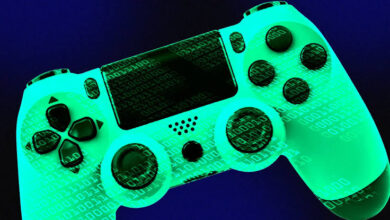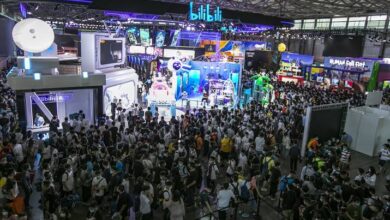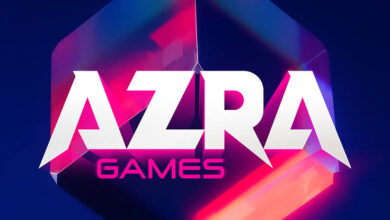NFT GAMES

If you enjoy role-playing games, then you’re sure to enjoy NFT GAMES! The fun of NFTs is matched only by its addictive gameplay. The game’s diverse characters, Virtual avatars, and in-game currency are sure to have you hooked! There are even in-game trading opportunities available! To get started, read on to learn how to earn NFTs in these exciting games! Also, discover how to collect them and use them to upgrade your character.
NFTs
Investors can capitalize on the NFT craze by investing in NFT games. These games often incorporate financial models so that you can earn cash while playing. As NFT gaming becomes more popular, its economic potential is expected to rise. Some of the games have even been identified as potential money makers. Forbes recently published its list of the ten best stocks for investors, and NFT games are certainly among them. To get started, here are some tips.
First, let’s look at how these games work. NFTs are the underlying currency of these games, and they can be used for trading, upgrading, and other actions. Players can purchase digital land to build and sell NFT creations. The sand can also be used to purchase other game items. As long as players have enough sand to pay for those items, they can earn real money from playing their favorite NFT games.
Once the user receives a certain amount of a game’s currency, they can trade it with other users or NPCs. Those who want to sell their tokens can do so outside of the game in marketplaces. Tokens’ value depends on their usefulness and cosmetic appeal. Newer NFT games feature a mix of earning tokens and finding them. The process of trading and earning NFTs may be considered gambling.
Axie Infinity, for example, is a virtual fantasy universe where players collect and trade Axies, which are NFTs. The currency is worth hundreds of thousands of dollars. In addition to earning money, NFT games also offer transparency in ownership. Ultimately, NFTs are a great way to make money while playing games. These games also encourage economic competition, which is a popular factor in gaming. However, if you have any doubts, don’t be afraid to contact the NFT community for help.
In-game currency
The in-game currency in the NFT GAMES is called Trilium (TLM). Players gain access to certain privileges through mining, including DAO voting rights and staking rights. They also gain planetary elections, which determine how to distribute the treasury. In addition to providing gameplay currency, NFTs are also used to purchase various premium items in the game. In the following paragraphs, we’ll discuss how to earn and spend NFTs in different games.
In-game currencies are the lifeblood of free-to-play games. Roblox, for example, has 43 million daily players, while Fortnite has double that number. Players can buy Robux, V-Bucks, or any number of other digital assets to advance their characters in the game. However, these digital assets are locked to the player’s account and cannot be exchanged for real money. However, it’s a good idea to understand the risks and rewards of using the in-game currency in a game.
In addition to the in-game currency, NFTs can also be used as real money. These can be bought and sold on digital marketplaces. In contrast to traditional video games, NFT GAMES in-game currency is stored in a crypto wallet and not in the game itself. Players can sell NFTs to other players or collectors for real-world value. With this in mind, it’s important to understand the financial implications of NFT GAMES.
Another method of earning NFT games in-game currency is through the sale of in-game items. While this method is not terribly profitable for the game creator, it can generate a considerable income. For example, if a player buys a weapon from another player in the game, the developer will receive a portion of the sale. That way, he or she gets a revenue share from the sale.
Virtual avatars
If you are a fan of NFT games, you may be wondering about the market for virtual avatars. The market for NFT avatars has grown rapidly over the last few years, and some of these avatars are worth millions of dollars. The good news is that you can buy and sell compatible NFT avatars on a variety of platforms. You can also sell your NFT avatars to your friends. Here is how.
CryptoPunk owners will receive a free Meebit NFT. Meebits are virtual avatars whose creators designed them to look like cartoon zombies. They will have access to several virtual worlds, and will be able to customize their avatars as they wish. You can also download 3D files from Meebit’s website and incorporate them into your own virtual world. The developers of the Meebit have partnered with many famous personalities to create virtual avatars.
If you don’t want to wait until the auction ends, you can still buy avatars through the NFT market. However, keep in mind that some avatars may be too expensive for you. If this is the case, you should scroll back to the non-auction avatars and look at the prices. You should notice that avatars with non-auction prices are priced in Ethereum currency. To buy one, you must have an Ethereum account.
Although virtual avatars have become very popular in social networking, they can never replace the need for in-person interactions. For example, while Second Life grew in popularity 15 years ago, it remained a niche market. Virtual worlds require 5G communication technology to ensure that avatars are widely accepted. By collaborating with NFT, NTT DATA is committed to making the digital economy platform of the future more accessible.
In-game trading
In-game trading in NFT GAMES is a growing trend, particularly in play-to-earn games. In Axie Infinity, players earn Smooth Love Potion tokens, which they use to evolve Axies. The game’s players also earn coins by completing key tasks, like exploring other planets and battling monsters. The most valuable Axies in the game’s marketplace command the highest price.
Other in-game trading in NFT GAMES includes Sorare, a fantasy football game based on tradeable real-life soccer players. Players can create a five-player team using tokenized soccer players, and then earn points by winning games, scoring goals, and completing events. Another in-game trading NFT game is Gods Unchained, a blockchain-based MMORPG similar to Hearthstone and Magic: The Gathering. Players can build decks of cards using the in-game currency and can earn in-game items.
The problem with in-game trading in NFT GAMES is that it can be easy to lose money. The amount of money lost depends on the structure of the game and the value of the NFTs and tokens. Because these tokens are traded speculatively, the value of each NFT can go up and down depending on what people think. If too few people are taking risks in the crypto market, the price of a single NFT could plummet.
However, despite the risks involved with in-game trading, NFTs are a great way to increase gamer interest. However, they can also undermine game balance and make it impossible to sustain a viable game. A NFT in an NFT game is essential for effective play balancing, but creating an in-game economy using a traceable token outside of the game presents its own unique set of challenges.
Market demand
The report focuses on the competitive landscape of the Play-to-Earn NFT Games market. It provides market data, basic information, product introductions, and highlighted analysis. The report also features forecasts by type and region. To provide a comprehensive view of the NFT Games market, it includes company profiles, revenue, production capacity, and price analysis. To understand the key trends and drivers impacting the industry, the research report is essential for both individuals and companies.
The NFT gaming market will be worth $4.3 billion in volume this year. This figure is low for one reason: the current level of penetration is less than two percent. However, NFT gaming spend in broader categories could exceed $20 billion this year. In other words, the industry is only in its infancy. Unlike other markets, NFT games may have a higher volume than in other industries, including fashion retail, luxury car sales, and home furnishings.
The P2E model will likely change the market. Other big titles may respond with similar innovations that enhance core gameplay. This shift will likely shift the focus to interoperability, with NFT collectibles being compatible with similar products. The COVID-19 pandemic will also affect the NFT market. People who have recently contracted the virus are staying home more, and this will drive growth for the NFT industry. In addition, more companies will likely enter the market in the future, thanks to the rising number of NFT-based games.
The success of NFT gaming will depend on how they integrate with the virtual world and how the user experiences it. The more connected NFTs are to the virtual world, the better the gaming experience will be. Digital art NFTs are the latest craze, and 3D gameplay is the next big step. Functional NFTs will make the gaming industry even more exciting. Guns, bulletproof vests, and pets will be just a few of the functional NFTs that are soon to be available. However, despite the hype around these new gadgets, more research and innovation will be needed before NFT games can reach their full potential.



